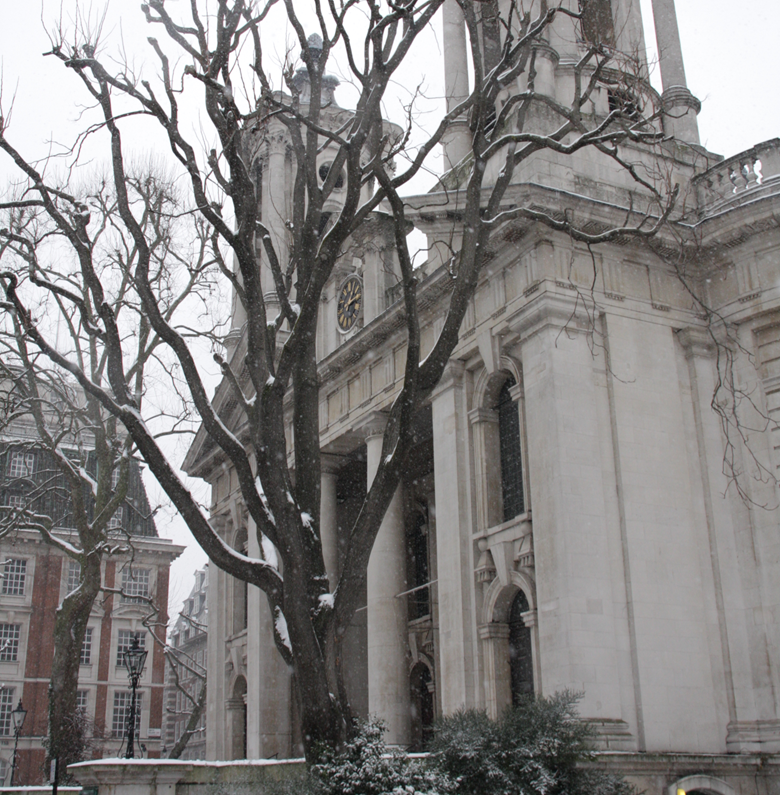St John's Smith Square brings festive cheer to the heart of Westminster
Simon Mundy
Tuesday, December 6, 2022
The Christmas Festival will run from 9 - 23 December at St John's Smith Square

There was a time in the not-too-distant past when we all sent over 100 Christmas cards for less than 20p each and expected 100 in return - enough to drape across banisters and sitting rooms. It was also a time when December meant three weeks of back-to-back performances of Handel’s Messiah, with every London hall hosting at least a complete handful. For many freelance singers and players, it was their equivalent of pantomime: more serious and uplifting but guaranteed to produce enough bookings to see them through the gloomy months till Easter.
Things have not irrevocably changed but they have shifted. The Christmas Festival (9 - 23 December) at St John's Smith Square (SJSS), just round the corner from Parliament and MI5, has been running for 37 years and gradually the concerts have included more adventurous and interesting material. Simon Over, the director of music at SJSS, says, 'we did not take a break during Covid, we just went online and we hope we're back attracting the best there is.'
The final cuple of days has become something of a home-made tradition, 'an annual relationship', when the Orchestra of the Age of Enlightenment takes the stage on the Thursday and Friday, with Stephen Layton conducting both evenings as a sort of long birthday present to himself. On the Thursday they accompany the choir of Trinity College, Cambridge, in Bach's Christmas Oratorio with a strong soloist line-up (Anna Dennis, Iestyn Davies, Gwilym Bowen and Matthew Brook). On the Friday they are joined by Layton's Polyphony for the Messiah - complete, not just the first half as used to be the Christmas habit - 'which,' Over says, 'always sells out in September'.
The collection of vocal ensembles is impressive for a two week event. The Brussels-based Vox Luminis kicks off the festival on 9 December with 17th century music by Schutz, Andreas Hammerschmidt and Johann Rosenmuller (the latter pair well outside the obvious programming). Siglo de Oro (12 December) has a programme that veers from the mediaeval to the contemporary, and with a good measure of women composers in the mix devoted to song about Mary. The group, founded eight years ago in London, include pieces by three young composers: Sarah Cattley (from Cambridge) and the Americans Sarah Rimkus and Kerensa Briggs.
Ex Cathedra, with Jeffrey Skidmore, go for atmosphere first when they perform by candlelight on 15 December. The Gesualdo Six, directed by Owain Park, take on a multi-century bunch of works too, including Joanna Marsh's In Winter's House on 19 December, while the Tallis Scholars and Peter Phillips devote their evening (21 December) to music from the Tudor period.
Between all these one cannot escape carols, of course, and as well as the college choirs (Clare from Cambridge, Christ Church from Oxford), the larger forces of the London Choral Sinfonia and the City of London Choir tackle the favourites. The Southbank Sinfonia, which started across the river at St John's Waterloo but has now become the owner of SJSS by replacing the previous trustees with its own ('perhaps we should think of ourselves as the Left Bank Sinfonia,' quips Over) are joined by the London Concert Choir for Finzi's Dies Natalis (Nicholas Madden singing the tenor part made so famous by Wilfred Brown), Holst's Christmas Day and Vaughan Williams Fantasia on Christmas Carols (10 December).
Simon Over says that SJSS is thriving now, despite the pressures of the times. The building itself, 'is a gem, a Ming vase of a hall,' and we see ourselves as very much at the heart of the London arts corridor, running from the Cadogan Hall up to Covent Garden. It was the first church in London to be converted into a full-time concert hall,' by a group of local supporters determined to see it restored after it was bombed out and left as a shell in World War II. 'There is still much we want to improve inside - lighting, heating, new seats and a much more flexible stage - but we also want to keep the sense of informality, of it being part of the village formed by the houses in the square and its surrounding streets.'

